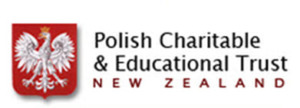Polish Refugees in New Zealand 1944-1951
Exhibitions
Hawera Boys Hostel

Polish Boy’s Hostel in Hawera, Princess Street extension. The hostel existed from 1949 to 1954, having achieved its objective of gradually absorbing its group of Polish children into the community. Source: Polish Children’s Reunion Committee 2004.
Polish Children’s Reunion Committee: By the end of 1948 there remained only 42 boys in the Polish Children’s Camp in Pahiatua. For the first term of 1949 they attended local schools, which was also their first year completely in English. What they lacked in academic achievement they made up on the sports fields. In May 1949 they sadly departed the camp in army trucks for Linton Military Camp, south of Palmerston North, lived in army barracks and followed army routine. Buses took them to Sunday Mass and to school in Palmerston North. They soon became more fluent in English.
In August 1949 they went by train to Hawera in South Taranaki to their very own Polish Boys’ Hostel. It was a large homestead surrounded by trees, an orchard, chicken house and several acres of grassland provided by the St Joseph parish, whose parish priest was Monsignor Francis Cullen. The Social Welfare Department built a long building with two dormitories for the 42 boys. With time and effort, they made it their home. The hostel was cared for entirely by Polish staff. It was managed by Jadwiga Tietze and supervised by her husband. Three other Polish ladies served as domestic staff. Over the years, six women fulfilled this important role with maternal care and warmth – Mesdames Dudek, Grzelarczyk, Kominowska, Porębska, Zielonka and Zytka. The boys’ sisters were allowed to stay at the hostel during school holidays to foster family bonding.
The living quarters, grounds and gardens were well kept by the boys on a roster basis. They worked hard to create a very large vegetable garden and restored the orchard to produce a variety of fruits and berries. Each morning and evening they gathered for prayers, and attended Mass on Sundays and holy days at the local gothic parish church. The Polish priest Father Broel-Plater visited every few months to celebrate Mass and devotions in Polish.
The boys completed the 1949 year at St Joseph’s Convent School, taught by Sister Pauline and Sister Charles Cowan. The latter came out of retirement to teach “her Polish boys” and taught English syntax and grammar, writing, maths, early New Zealand history, and government and political structures, plus religious instructions, prayers and hymns. A dynamic and gifted teacher with a no-nonsense approach, and powerful singing voice, she prepared them for high school and the New Zealand way of life. Several of the boys achieved academic distinctions, including English and public speaking.
From 1950 the boys attended Hawera Technical High School, some 3km away. They bought bicycles with their pocket money, which was hard earned from after-school and Saturday jobs mowing lawns, gardening or working on nearby farms. The people of South Taranaki were very supportive and provided these jobs for them. The boys earned their respect and lived up to their high expectation of honesty and hard work. They went on bicycle trips on Sundays and grew in strength, stature and responsibility.
The boys were also a dominant presence in the college, especially in sports but also in the classrooms, and were recognised for their dedication to hard work and play. Upon leaving school the local people readily offered board to them. Some took up apprenticeships or farmed nearby, while others went to college. There was little encouragement to take up professional careers. The attraction was to earn one’s own money and become independent.
At the end of 1954 the hostel was closed and reopened as Calvary Hospital under the care of the Sisters of the Little Company of Mary, dedicated to the care of the sick and the dying. Later it became a privately owned rest home and hospital.
Sources: Od Lubcza na Antypody, by Sister Alexandrowicz, and Bronisław Węgrzyn (Hawera Hostel)
NZ’s First Refugees: Pahiatua’s Polish Children (3rd edition); p.347-348




